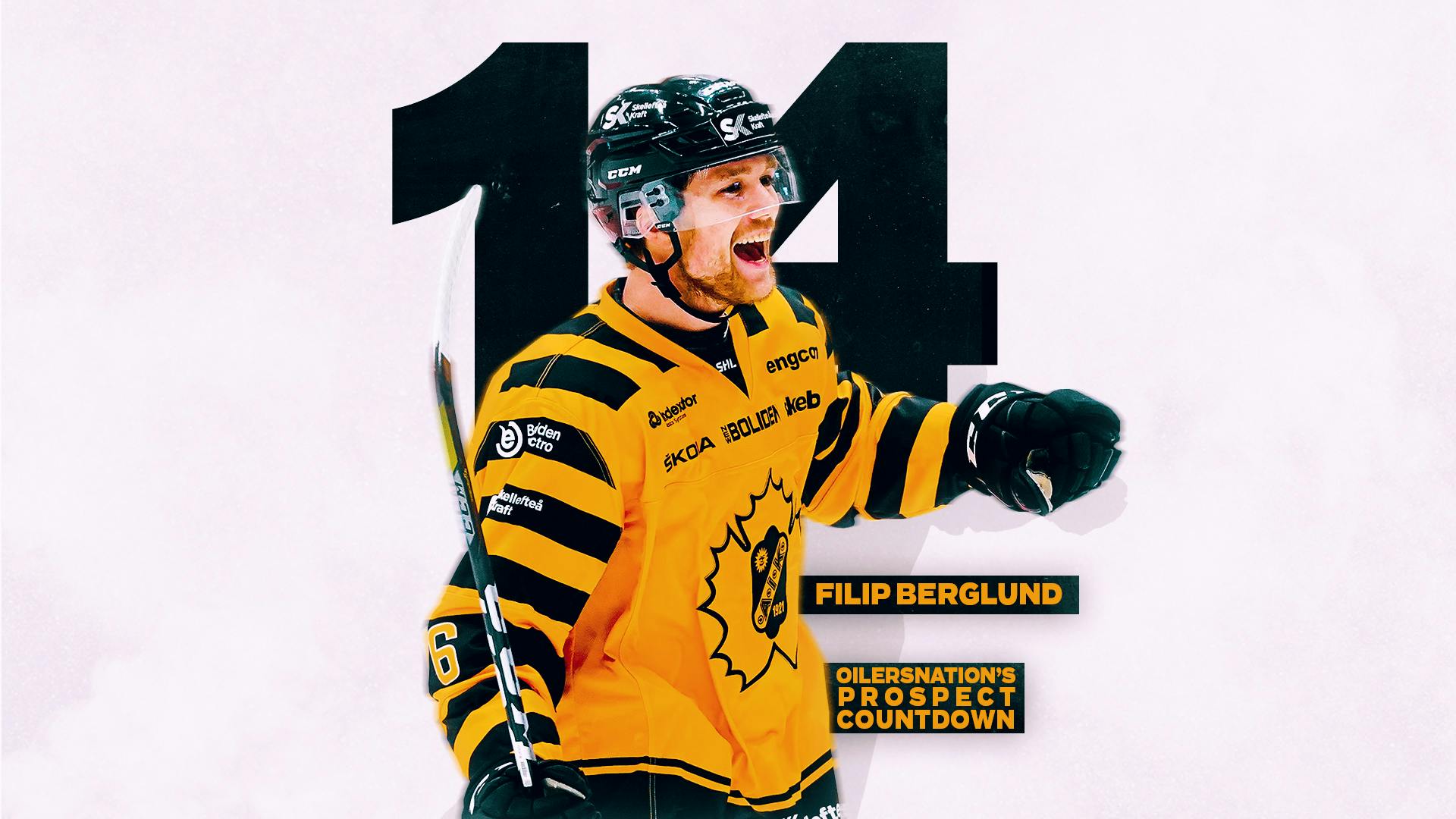Back in July, the Oilers inked defenceman Filip Berglund to a two-year, entry-level contract.
Berglund, who was drafted by the team with the No. 91 overall selection in the 2016 draft (the pick that Edmonton received from Pittsburgh in the Justin Schultz trade), was set to become an unrestricted free agent on June 1.
Though he isn’t a household name by any stretch, Berglund’s career over in Sweden is shockingly reminiscent of another defenceman the team drafted with a mid-round pick a few earlier and opted not to sign. That decision came back to bite them, and Ken Holland didn’t risk making the same error.
Filip Berglund
Position: Defence
Shoots: Right
Nationality: Sweden
Date of Birth: May 10, 1997
Drafted: 2016, No. 91 overall (EDM)
Height: 6’3″ / 190 cm
Weight: 209 lbs / 95 kg
Shoots: Right
Nationality: Sweden
Date of Birth: May 10, 1997
Drafted: 2016, No. 91 overall (EDM)
Height: 6’3″ / 190 cm
Weight: 209 lbs / 95 kg
The other defenceman I referenced above, of course, is Erik Gustafsson.
The Oilers picked Gustafsson with the No. 93 selection in the 2012 draft, let him hone his craft in Sweden for a few years, and then decided not to sign him. Gustafsson would go on to ink a free-agent deal with the Chicago Blackhawks in 2015 and eventually broke out in 2018-19 with a 60-point season.
Letting Gustafson slide wasn’t was met with much controversy at the time, but, looking back in hindsight, it was a pretty bizarre decision. This came at a time when the Oilers weren’t exactly loaded with talent on the back-end, so letting even a decent, middling prospect go was strange.
Anyway, history won’t repeat itself this time around. The Oilers have Berglund signed and the hope is that he can become a quality NHL defender like Gustafsson did.
Beyond the fact that they’re both Swedish defencemen who were selected a few picks apart, Berglund had similar numbers to Gustafsson in the Swedish Elite League at the same age. In his age 22 season in 2014-15, Gustafsson averaged 19:15 per game and recorded 29 points and a plus-two rating in 55 games. Berglund, on the other hand, put up 20 points and a plus-four rating in 52 games and averaged 18:20 in his age 22 season in 2019-20.
While the production is similar, it’s important to note that these are two very different players. Gustafsson is smaller, quicker, and more oriented to an offensive game while Berglund is a big and physical defender who compensates for mediocre speed with strong puck-moving ability and very sound positional play.
I wouldn’t expect Berglund to come over to North America and pop off as an offensive defenceman like Gustafsson did. But that doesn’t mean he can’t also follow suit and become a quality NHL defenceman.
Back in January, Scott Howson spoke to Bob Stauffer on Oilers Now and mentioned that the organization was impressed with how Berglund had massively improved his skating, which had clearly been his biggest weakness back when he was drafted…
“He’s a guy that has improved his skating. That was the big issue with him coming out of his draft year, could he skate? He’s improved his skating, it’s more than adequate now at that level and he’s a guy we’re going to have to decide on. He’s certainly put himself in a position to get strong consideration.”
If Berglund can get his skating up to NHL calibre, he fits the profile of a nice defensive defenceman, somebody who plays a positionally and fundamentally sound game, is difficult to play against the defensive zone, and can make good outlet passes. Something along the lines of a poor man’s Adam Larsson.
And, from an Oilers’ perspective, internally-developing such a player would be ideal. Larsson is set to become a free agent at the end of the 2020-21 season. If he isn’t re-signed, there could be an opportunity for Berglund, who boasts quite a bit of experience playing professionally in Sweden, to step into an NHL role as a third-pairing, defensive guy.
That would be a win for a third-round selection.
For reference, players who I consider to be “prospects” for this countdown are skaters who have played fewer than 50 NHL games and goaltenders who have played fewer than 25 NHL games. I’m basing the rankings on a combination of upside and the likelihood of reaching that potential.

